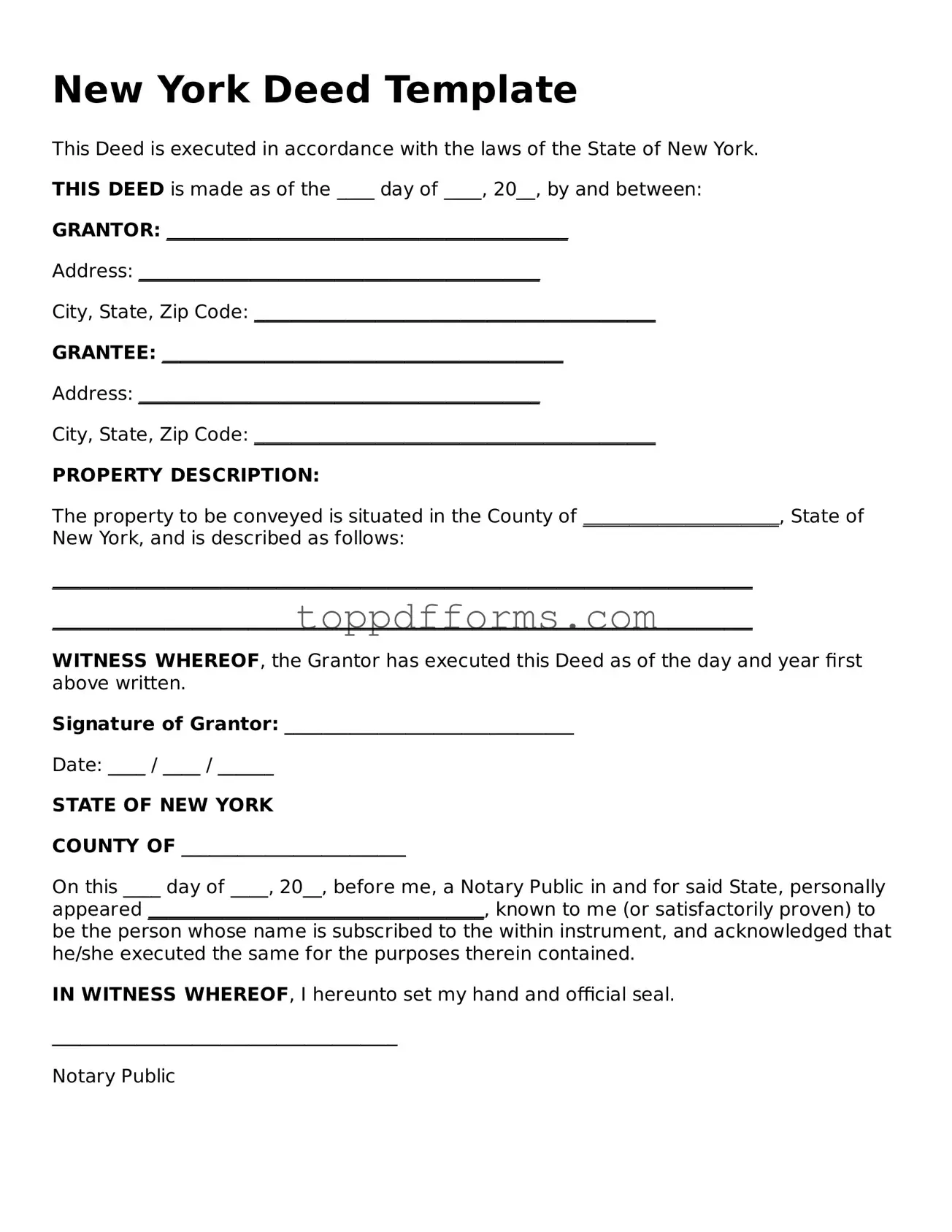What is a New York Deed form?
A New York Deed form is a legal document used to transfer ownership of real property from one party to another within the state of New York. This form serves as a written record of the transaction, detailing the parties involved, the property being transferred, and any conditions or covenants associated with the transfer. It is essential for establishing clear title and ensuring that the rights of the new owner are recognized by law.
What types of deeds are available in New York?
New York recognizes several types of deeds, each serving different purposes. The most common include the Warranty Deed, which guarantees that the grantor holds clear title to the property; the Quitclaim Deed, which transfers whatever interest the grantor may have without warranties; and the Bargain and Sale Deed, which implies that the grantor has title but offers no guarantees. Understanding the differences between these deeds is crucial for both buyers and sellers in a real estate transaction.
How do I complete a New York Deed form?
Completing a New York Deed form requires accurate information about the parties involved and the property. Start by entering the names and addresses of both the grantor (seller) and the grantee (buyer). Next, provide a legal description of the property, which can often be found in previous deeds or tax documents. Finally, sign the deed in the presence of a notary public to ensure its validity. It’s advisable to consult with a legal professional to avoid errors that could complicate the transfer.
Is a New York Deed form required to be notarized?
Yes, a New York Deed form must be notarized to be legally binding. The notary public's role is to verify the identities of the signatories and to witness the signing of the document. This step adds a layer of authenticity and helps prevent fraud. Once notarized, the deed can be recorded with the county clerk’s office to provide public notice of the property transfer.
What is the process for recording a deed in New York?
To record a deed in New York, the completed and notarized document must be submitted to the county clerk's office in the county where the property is located. Along with the deed, a recording fee is typically required. Once recorded, the deed becomes part of the public record, which helps protect the new owner’s rights and establishes a clear chain of title. It is wise to keep a copy of the recorded deed for personal records.
Are there any taxes associated with transferring property in New York?
Yes, transferring property in New York often involves several taxes, including the Real Property Transfer Tax and, in some cases, the New York State Mansion Tax for higher-value properties. The seller usually pays the transfer tax, but this can be negotiated. Additionally, local municipalities may impose their own transfer taxes. It is crucial to be aware of these potential costs when planning a real estate transaction.
Can I use a New York Deed form for transferring property to a family member?
Absolutely, a New York Deed form can be used to transfer property to a family member. Many people choose to use a Quitclaim Deed for such transfers, as it simplifies the process by allowing the transfer of interest without warranties. However, it is essential to consider the implications of such a transfer, including potential tax consequences and the impact on estate planning.
What happens if a deed is not recorded?
If a deed is not recorded, the transfer of property ownership may still be valid between the parties involved, but it can lead to significant complications. Without recording, the new owner may face challenges in proving their ownership against third parties. Additionally, if the grantor sells the property to someone else and that deed is recorded, the new buyer may have a stronger claim to the property. Therefore, recording the deed is a critical step in protecting ownership rights.
Where can I find a New York Deed form?
New York Deed forms can be obtained from various sources. Many legal websites offer templates that can be downloaded and filled out. Additionally, local county clerk offices often provide forms or guidance on how to create one. For those unfamiliar with the process, consulting a real estate attorney can be beneficial to ensure compliance with state laws and regulations.
